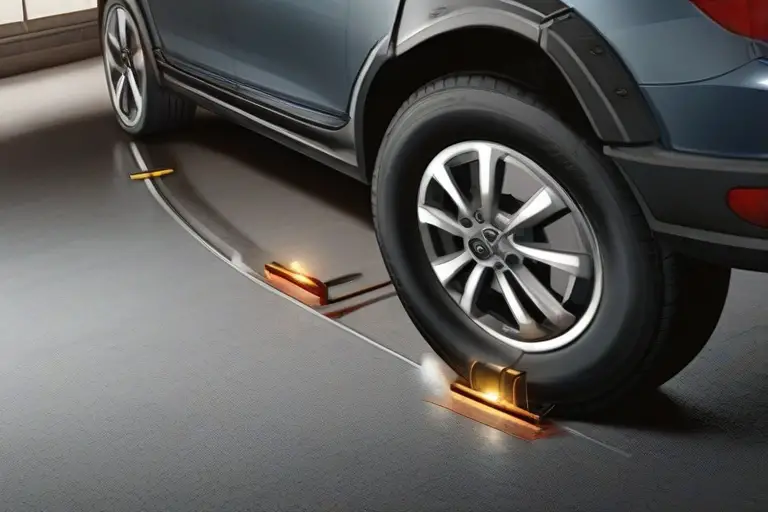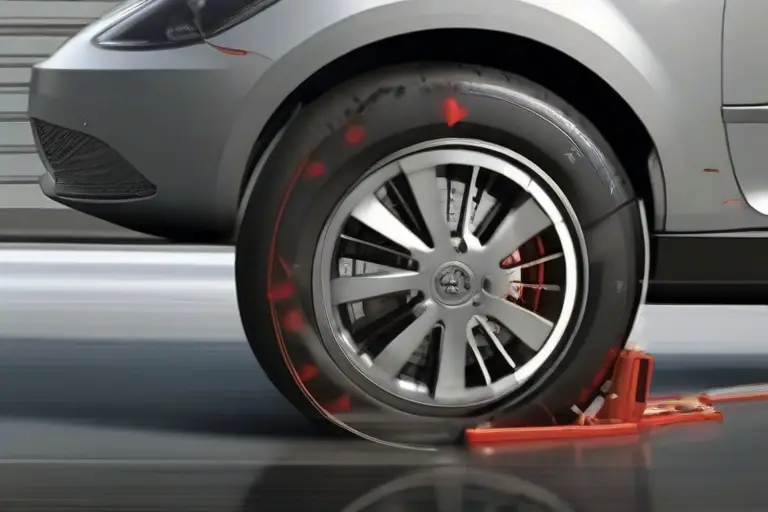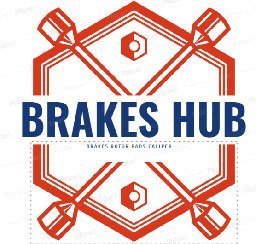How Do You Activate The Anti-Lock Brake System
Driving on a slippery road can be very dangerous, especially for a newbie driver. Thankfully, since the emergence of the Anti-braking System (ABS), there’s hope for safe driving. ABS has taken the place where people have to pump their brake pedals to avoid skidding. This is the function of an anti-braking system. An anti-braking system plays a vital role in an engine braking system.
It is installed in modern cars and makes driving a lot safer. A lot of people have heard of it and some even have it but don’t know how it works or how to activate it. You’ve probably heard of it, but do you know exactly what ABS is and how it works? Find out how your car’s ABS improves your driving and what to do if there’s a problem with your brakes.
Table of Contents
What is an Anti-Lock Braking System?
An Anti Lock Braking System (ABS) is a safety feature that is now standard in most vehicles. This innovative system prevents the wheels from locking up (or skidding) when braking, thereby maintaining the vehicle’s contact with the road and ensuring the driver’s ability to steer. Essentially, the ABS allows drivers to have more control over their vehicles, particularly in emergency braking situations or adverse conditions.
The system uses speed sensors and a series of hydraulic valves to regulate brake pressure, allowing the wheels to continue rotating and enabling drivers to steer around obstacles. This ingenious technology vastly improves road safety by reducing skidding and shortening braking distances. Understanding how ABS works can help drivers appreciate the level of sophistication involved in modern vehicle safety systems and how it contributes to their day-to-day driving experience.

Step-by-Step Guide: How to Activate Your Anti-Lock Brake System
Driving safely is a top priority for all drivers, and knowing how to activate your Anti Lock Braking System (ABS) can play a key role in maintaining control over your vehicle during an emergency. The ABS is a safety feature designed to prevent your wheels from locking up, or skidding when you apply brakes suddenly.
Activating ABS isn’t a manual process; rather, it gets activated automatically during instances of hard braking. When you apply the brakes rapidly, you may feel a pulsing sensation – that’s your ABS at work. It pumps the brakes for you, allowing you to maintain steering control. This system works best when you press the brake pedal firmly and hold it, rather than pumping the brakes yourself.
Understanding how your Anti Lock Braking System operates is a critical part of safe driving. It empowers you to take the right action in critical situations, ultimately helping you to drive with confidence and peace of mind.
Components of Anti-lock Braking System
Here are some components of the antilock braking system:
Speed Sensors: The speed sensor is an encoder that helps to speed the wheel. It works with a magnetic sensor that builds a magnetic field around the sensor when the wheel rotates. The magnetic field then generates a voltage in the sensor. When the rotation reduces, the sensor produces inaccurate results.
Valves: The valve has three angles. The first position allows pressure from the cylinder into the brake. The second angle is where the valve blocks the line that separates the brake from the master cylinder.
The valve releases some pressure from the brake in the third position. The only problem associated with the valve is clogging.
Controller: The controller is what receives the signal when the wheel loses traction. It functions as the ECU device by receiving information from the wheel speed sensor. The controller lowers the brake force and triggers the ABS modulator, which detects whether the braking valve is on/off.
The controller is responsible for reducing the speed of the wheels that are out of the ordinary. This happens before the wheels lock up, if it doesn’t happen, the wheel stop will be much quicker.
Pump: This is the system that resorts the pressure back to the hydraulic brake when the valve releases it. It gives signals that launch the valves when the slip is detected in the wheel.
When the driver applies pressure on the brake, the valve releases the pressure and the pump restores the required amount of pressure to the braking system.

How to Activate Your ABS
The anti-lock braking system helps to pulse the brakes so that they don’t lock up. If the brake doesn’t lock up, you are able to control the steering wheel better.
It activates when the driver pumps the brake first, when the diver does this, the brake pad will feel the brake pad drop suddenly followed by a rapid pulse sensation.
During this activation, you might hear a grinding or buzzing noise coming from the vehicle. You will also feel like the brake pedal is pulling back. Anti-lock brake sensors are typically magnetically triggered.
As the reluctor’s teeth pass the sensor, the normal pulsing rhythm of wheel motion indicates normal operation. It is when the reluctor speed across the sensor changes dramatically (wheels slow down or stop) that the ABS will pulse the brake application.
Read Another Post: Vacuum VS Hydro Boost Brake Boosters: Which One Better?
How to Tell if Your Vehicles ABS Is Working
The only time to notice that your ABS is working is during hard braking, it is only hard braking that activates the system, when the ABS is working, you will notice a difference in how the brake feels. The brake may vibrate or push back against your feet.
In some cases, the pedal will drop to the floor. You can also hear a grinding sound when you apply pressure to the brake, this is also a clear sign that your ABS is functioning properly.
Safety First: The Role of ABS in Preventing Accidents
The Anti-lock Braking System (ABS) is a crucial safety feature in modern vehicles that plays a significant role in preventing accidents. So, how does it work? ABS prevents the wheels from locking up (or skidding) while braking, thereby maintaining tractive contact with the road surface. This ability allows the driver to have better control over the vehicle, especially on slippery surfaces or during sudden braking, reducing the chances of skidding and sliding.
ABS works by constantly regulating the brake pressure to each wheel through a series of rapid pulsations. This system improves vehicle control and decreases stopping distances on both dry and slippery surfaces. However, while ABS significantly enhances safety, it’s important to remember that it doesn’t diminish the need for safe driving practices. It’s always crucial to maintain a safe distance from other vehicles, drive at a speed suitable for the conditions, and be vigilant on the road. ABS is there to assist, but safe driving starts with you.

Maintenance and Care: Ensuring Your ABS is Always Ready for Action
Maintaining your vehicle is essential for ensuring its longevity, safety, and performance. One of the critical components that require regular inspection and care is the Anti Lock Braking System (ABS). The ABS is a safety system designed to prevent the wheels from locking up or skidding during braking, thereby maintaining tractive contact with the road surface.
Regularly checking your ABS can help identify any potential issues before they become serious problems, ensuring your vehicle is always ready for action. This involves visually inspecting the ABS for any signs of damage, checking the ABS sensors for dirt or grime that could affect their performance, and ensuring the ABS warning light on your dashboard is functioning correctly.
Remember, a well-maintained ABS not only contributes to a smoother and safer ride but also enhances the overall performance of your vehicle. Thus, never underestimate the importance of proper care and maintenance of your anti-lock braking system. Your safety on the road may depend on it!
Frequently Asked Questions (FAQs)
Should I pump the brake pedal when stopping in slippery conditions?
No, you should not pump the brake pedal in a car with ABS. a car with ABS wheels will never lock so pumping the brake will make it take a longer time for the brake to stop. When in an emergency and need to apply the ABS, apply and hold the brake pedal firmly and let the ABS do the work. You may feel a push in the pedal, but that’s normal.
Do anti-lock brakes really work?
Certainly, anti-brake helps to stop the car faster. ABS helps to protect the wheels from locking fast and provides the best stopping time on short distances.
What causes ABS to activate?
Anti-lock brake sensors are typically magnetically triggered. As the reluctor’s teeth pass the sensor, the normal pulsing rhythm of wheel motion indicates normal operation.
At what speed does ABS activate?
The ABS activates at a speed above 30 kph. That’s because many ABS systems shut off when the vehicle hits below 10 kph. Also, at this speed, you will need lots of speed to feel it working.
Why is ABS light on but no code?
The ABS light shows a no error code when the ABS wiring sensor wiring is not right, if one wheel bearing is bad, if the tires need alignment or the tires are torn, or if one of the ABS sensors has a recurring fault
Conclusion
Understanding and activating your vehicle’s Anti-Lock Brake System can greatly enhance your driving safety, especially in challenging conditions. Not only can it potentially prevent accidents, but it also helps to maintain your vehicle’s performance and longevity. So, take time to familiarize yourself with your vehicle’s features and functionalities – it’s not just about driving, it’s about driving safely and responsibly. Consider this – how well do you know your Anti Lock Brake System?
